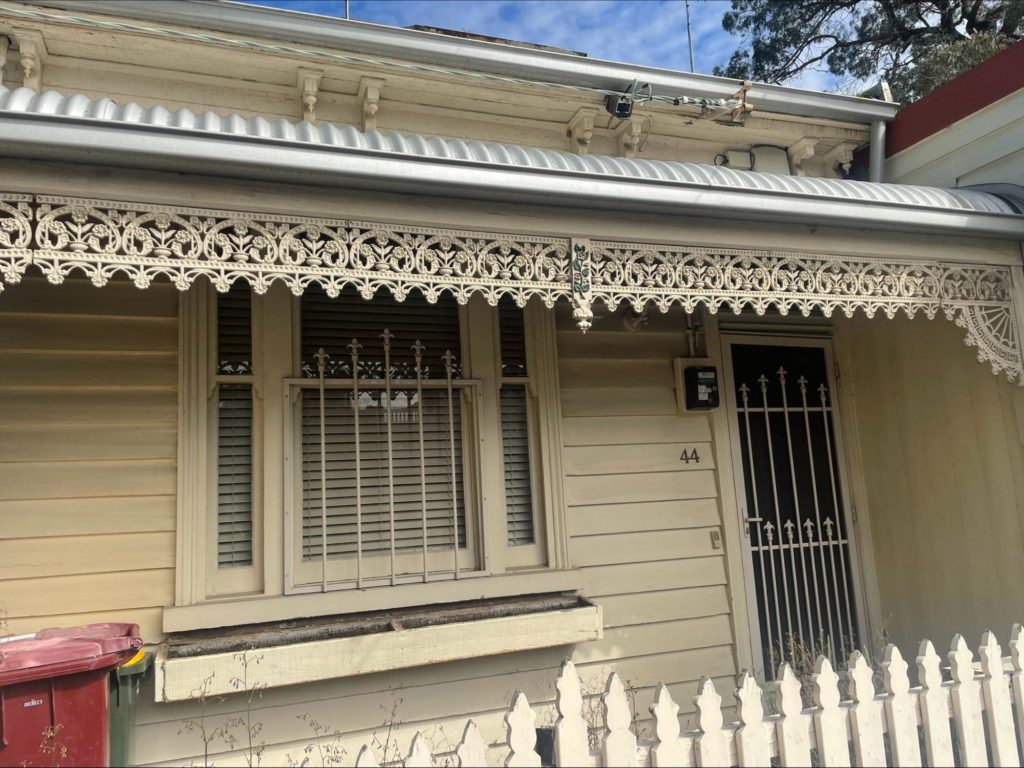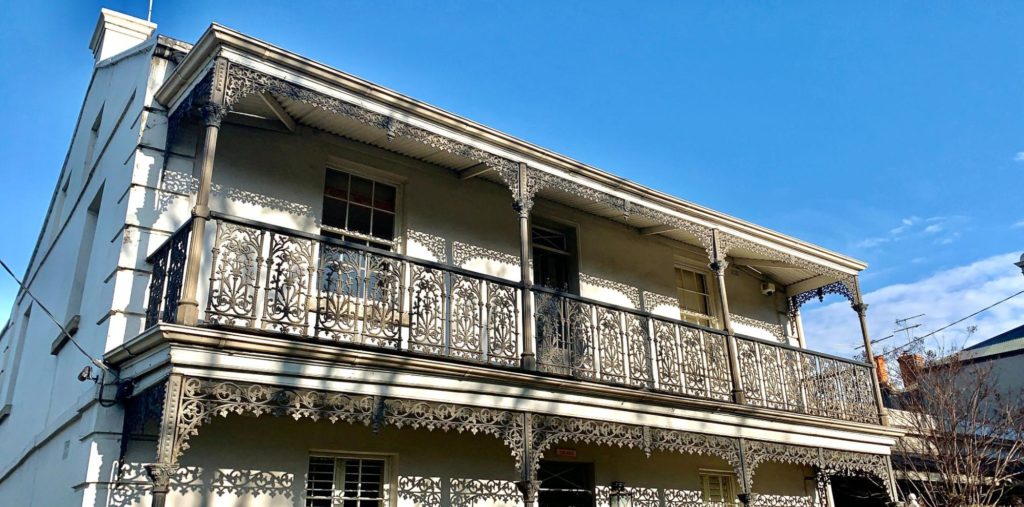Melbourne is, among many other accolades, one of the most varied and unique cities in the country from an architectural standpoint. This comes from a considerable amount of creativity and emphasis on quality craftsmanship that has come to define the city, but more than that, it also showcases the importance of retaining history. The i-heritage database provides information on over 8000 structures across Melbourne and its suburbs, including everything from their heritage status to the specifics of their architectural style and historical context.

Simply wandering the streets of Melbourne will provide you with insights into stylistic periods spanning back to its very foundations, with signage, storefronts, and government buildings still standing and being maintained since before the turn of the century. This has allowed South Melbourne especially to maintain a timeless charm, in no small part because of the wrought iron verandah panels, metal lace and brackets that could be considered its signature style as a suburb.
Even as a hub for digital companies and marketing agencies, South Melbourne’s stylistic sentiments still lean towards Victorian-style homes, many of which still maintain their beautifully ornate facades of wood and metalwork. So, today, we’re going to take a little look at Victoria’s history with metalwork, and how this beautiful mainstay of design has persisted to this day.

A History Etched in Iron
It could be said that, in terms of architectural history and heritage, ironwork is the connecting thread between inner-city Melbourne and its more rural and country counterparts such as Ballarat and Bendigo. From the intricate interweaving of iron strands that curl and stretch vine-like across the verandahs of homes to the myriad balustrades and gates that hold a similar level of iconic metalworking skill, it’s hard to take a single step through Melbourne’s inner suburbs without coming across a little hint of history.

These ornamental trends can be traced back to English sentiments, but that’s not to say there isn’t a distinction between those seen in 19th-century Brittain and those we have here. Metalwork of this kind has a considerable amount of distinction between countries, and even states, as different trends were interpreted differently and incorporated into the kind of shapes and techniques that would be utilised. However, Victoria itself holds a special distinction and historical significance in this regard, as it was, as you’re likely aware, home to the Gold Rush of the mid-1800s.
The Victorian Gold Rush of the 1850s was a massive explosion of change, both in the number of visitors the state received and in the preferences of those that lived there at the time. Luxury was in, and whilst the use of iron was primarily due to its relative affordability to manufacture, the large number of new people setting up homes throughout Victoria led to a sizeable increase in demand for the decorative flourishes of ironwork we know today.

A Craft of Culture
When looking at the shapes and designs associated with Australia’s ironwork, especially when it comes to verandahs and other house-based flourishes, you’re likely to see a lot of symbols evocative of the local nature of the area. New South Wales homes are often seen with cockatoos, whilst Melbourne and Ballarat abodes will more often be adorned with kookaburras immortalised in their ironwork. These are subtle differences, but they speak to the quirks and distinctions that can so easily be lost in the context of times passed.

We often look at history in terms of its most impactful moments and people, laying out timelines and connecting dots from significant event to significant event. However, whilst this is certainly valuable, and the bigger things are inevitably going to be what is remembered by future generations, these little distinctions can often be just as important to how the common person lived and experienced their life at the time.
Creators, from ironworkers to illustrators to musicians, will each take elements from the time period with which they identify, and so by looking at these similarities in style, we can get a sense of what it felt like to be in that time and place through the creations that place left behind.
~
South Melbourne is a stunning representation of stylistic history, and it’s a reminder of just how beautiful Melbourne and its suburbs can be. So, next time you’re in the area, explore the architecture and consider the things that might still be around from our lives in 100 years’ time. There may not be another South Melbourne Town Hall in terms of iconic governmental architecture, but everything leaves its impression on the world, and it’s nice to know that even the little things can live on far past their intended time and place.





